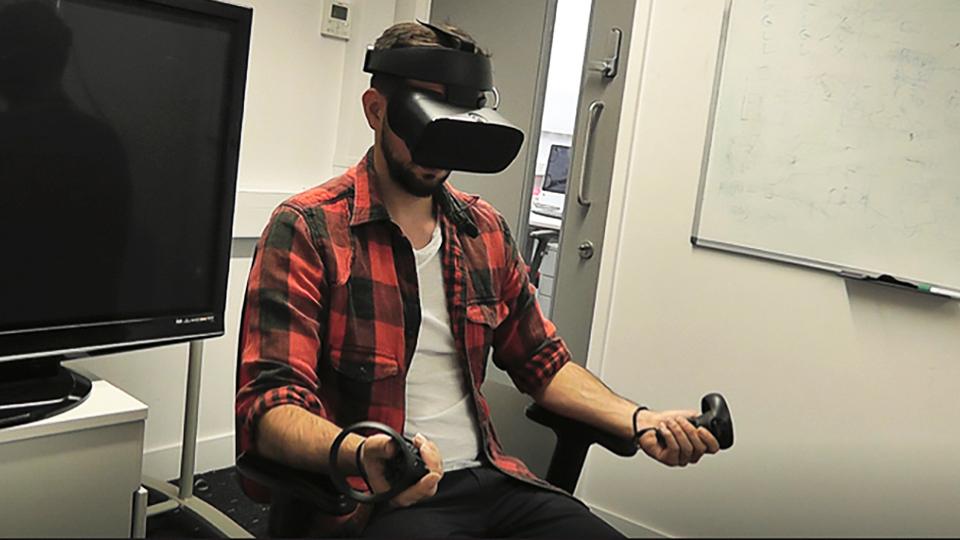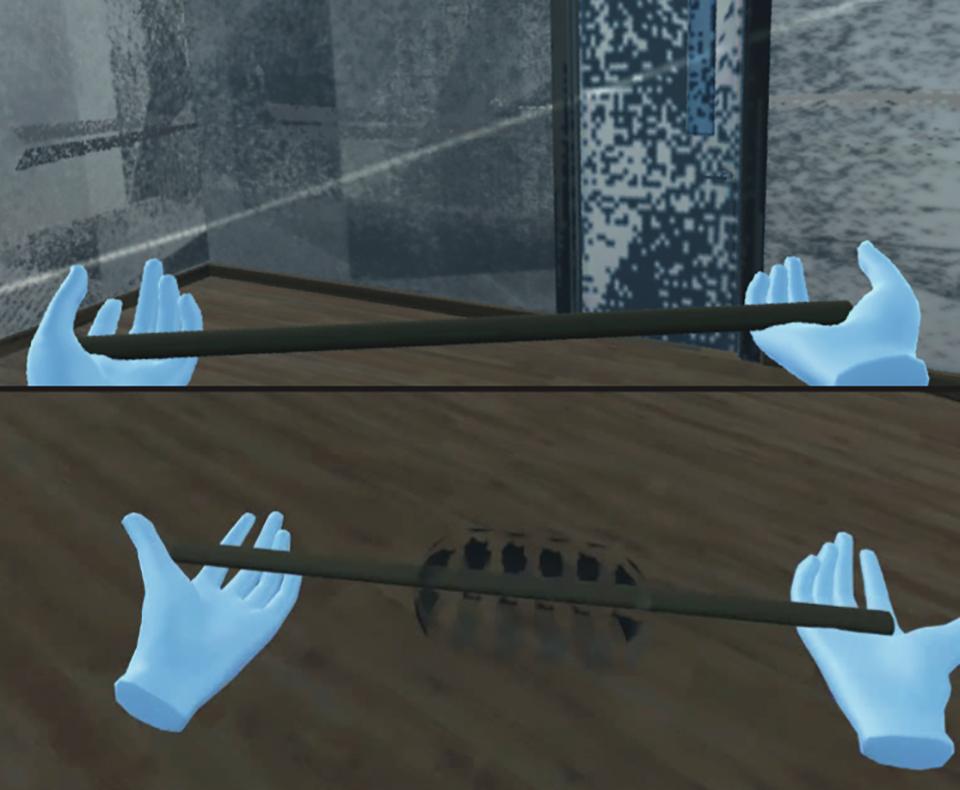Touch beats sight for sense of 'being there' in virtual worlds
Primary page content
Interacting with virtual environments through touch may contribute more to a sense of presence than seeing them, new research from Goldsmiths, University of London has found.

The study used Oculus Rift S and Oculus Touch
The research also showed that increasing the sophistication of haptic (‘touch based’) feedback alongside visuals and sound enhanced someone’s feeling of ‘being there’ in a virtual reality (VR) environment.
The findings could help those creating VR games and applications make them more compelling and realistic by introducing the sort of sophisticated haptic feedback not normally developed for consumer VR devices.
A report of the research, published in the International Journal of Human-Computer Studies, details a series of experiments in which a group of volunteers experienced a virtual ball bouncing on a virtual stick held between the hands of their avatar.
During the experiments the haptic feedback was altered to simulate the ball bouncing on different locations along the stick. Sometimes the ball was hidden by a simulated cloud, at other times its exact location was visible and on some bounces the haptic feedback was taken away. While still within the virtual environment the 23 participants were asked to rate how much they agreed with 14 statements about their sense of presence and how real their experiences felt under the different conditions.
Analysis of the participants’ responses suggested the considerable contribution haptic feedback made to people’s sense of presence in the virtual world. Surprisingly, haptic feedback on its own gave a greater sense of presence than visuals on their own, although both together consistently enhanced presence more than either alone. Visual feedback was reported to be better for determining the exact location of the ball bouncing on the stick but haptic feedback was better for telling when an impact had occurred.
The study was conducted using the commercially-available Oculus Rift S headset, with Oculus Touch handsets to control avatar hand movement, and to deliver haptic feedback. The researchers believe the significance of haptic feedback is striking considering in such systems it is limited to vibrating motors within the hand controllers that cannot replicate the rich array of pressure, texture, vibration, temperature and pain sensations we experience in our daily lives.
Dr Sylvia Xueni Pan, Lecturer in Computing at Goldsmiths said: “Human-computer interaction, or HCI, is normally dominated by visual and audio feedback, which is a limitation partially imposed by the traditional 2D, flat screen for display.
“The rise of Virtual Reality in the consumer market gives us an opportunity to redefine HCI, making it closer to how we interact with the world in real life, and haptic feedback will be a big part of this. However, designing realistic haptic feedback will be a big challenge, as the way we process haptic feedback in real life is often subconscious.
“I hope the results of our study will get haptic feedback some well-deserved attention from VR developers and HCI designers.”
A report of the research, ‘A Comparison of the Effects of Haptic and Visual Feedback on Presence in Virtual Reality’ by Janet K Gibbs, Marco Gillies, Xueni Pan (Goldsmiths, University of London) is published in the International Journal of Human-Computer Studies.
Image below: Volunteers interacted with a ball bouncing on a stick held in their avatar's hands. On some bounces the ball was visible on others it was hidden by a cloud with the impact only felt as a vibration.
